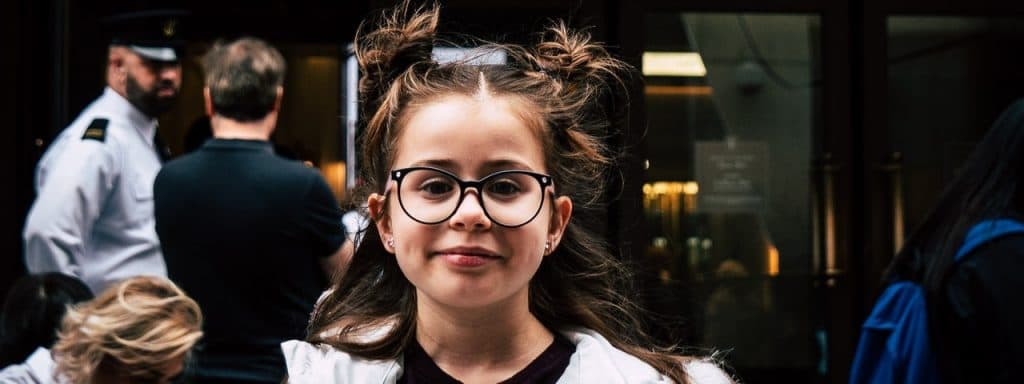What are bifocal glasses?
Bifocal lenses are effective in supporting a child’s focusing for all school work and may even alleviate eyestrain, headaches, blurred vision and fatigue.
Bifocal glasses (bifocals) contain two distinct vision prescriptions — the top of the lens corrects distance vision, while the bottom of the lens corrects near vision.
Bifocals were originally created for people who have difficulty seeing both distant and near images clearly — this problem is usually associated with aging.
However, children can also need bifocals for the following reasons:
- Inadequate control over the lens inside the eye. The main role of the eye lens is to focus on an image, to enable clear vision, specifically for near images.
- Inability to sustain focus over an extended period of time. This can lead to blurring of words, especially if the child is tired or doing homework.
- Inability to shift focus quickly from distant to near images. This is necessary when a child copies from the board to their notebook and can result in blurry vision any time they look away.
- Over focusing problems causes additional stress on the eyes. This can lead to eyestrain, headaches, and even eye turns— causing double vision.
- Increased stress on the visual system for near vision. This can cause both visual and physical discomfort —narrowing of perceptual fields with a reduction in visual space, a possible development nearsightedness; and neck and back tension.
Are bifocals necessary?
While bifocals typically contain two different vision correction prescriptions, they also can be used as reading glasses for children. Bifocal lenses are beneficial for children who have reduced focusing abilities for near vision— the bifocal provides a plus lens, which provides the support they need for close vision, without changing their distance vision.
In some cases, these plus lenses, are called ‘learning’ or ‘support’ lenses, and will be prescribed to help relax the child’s focusing system, to enable longer periods of comfortable vision.
Contact an eye doctor near you that has experience in prescribing bifocal lenses for children.
SEE RELATED: Do Children Need Sunglasses?
Does my child need to wear bifocals all day?
It is important for children to wear bifocals for all close work, especially at school and for homework. Bifocals may not be needed for long term use as some children may only require the extra support until they develop stronger control of their focusing system. Other children will continue to require the additional support for near vision for as long as they are in school.
An eye doctor will advise when your child needs to wear these glasses and for how long.
Do all bifocal glasses have a bisecting line?
Early bifocal lenses contained a visible bisecting horizontal line that stretched across the entire lens and clearly segmented the top of the lens from the bottom. These lenses are called ‘executive bifocals’ and are not usually prescribed for children.
Later bifocal designs contain a smaller half-moon (D-shape) segment designed for near vision correction, with the rest of the lens to be used for distance. This segment is called a ‘D-segment’ and establishes a clear delineation between lens powers, without the visible straight line extending horizontally across the entire lens.
Some children might prefer to use a bifocal lens as it helps them to understand which lens power to use for its specific purpose.
Multifocal lenses
In recent years, multifocal (progressive) lenses have been designed to combine the distance and reading lens powers without a visible line. This is a popular choice for parents and children for both aesthetic reasons, as well as to limit “image jumps” which can occur as the child looks from one lens power to the other.
The multifocals used for children are different from the types used by adults as the reading power is significantly lower and they are easier to use.
Vision therapy
It is important to note that sometimes, if the focusing problem is severe, or your child has multiple vision problems, a vision therapy program will be prescribed in conjunction with eye glasses. This program will help your child and facilitate resolution of the underlying visual problems.
LEARN MORE: Guide to Children’s Eye Exams
Schedule an appointment with a vision therapy eye doctor to discuss a treatment program.


